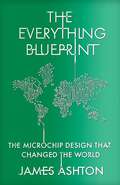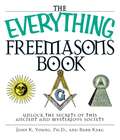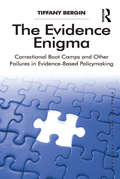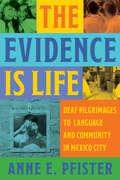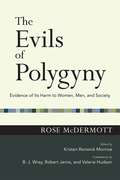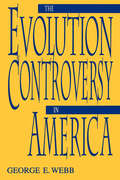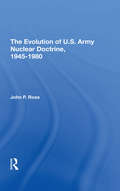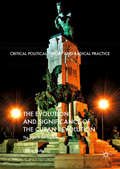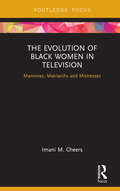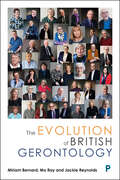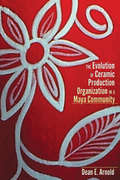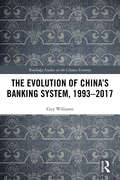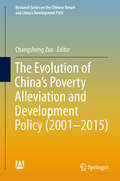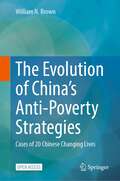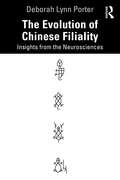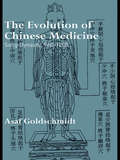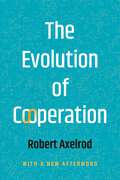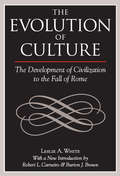- Table View
- List View
The Everything Blueprint: The Microchip Design that Changed the World
by James AshtonPre-order now: a gripping look at the rise of the microchip and the British tech company behind the blueprint to it all.'A gripping and inspiring read.' Sir James Dyson'A revealing and insightful biography of the company whose blueprints define the digital world.' Chris Miller, author of CHIP WAR: The Fight for the World's Most Critical Technology __________One tiny device lies at the heart of the world's relentless technological advance: the microchip. Today, these slivers of silicon are essential to running just about any machine, from household devices and factory production lines to smartphones and cutting-edge weaponry.At the centre of billions of these chips is a blueprint created and nurtured by a single company: Arm.Founded in Cambridge in 1990, Arm's designs have been used an astonishing 250 billion times and counting. The UK's high-tech crown jewel is an indispensable part of a global supply chain driven by American brains and Asian manufacturing brawn that has become the source of rising geopolitical tension.With exclusive interviews and exhaustive research, The Everything Blueprint tells the story of Arm, from humble beginnings to its pivotal role in the mobile phone revolution and now supplying data centres, cars and the supercomputers that harness artificial intelligence.It explores the company's enduring relationship with Apple and numerous other tech titans, plus its multi-billion-pound sale to the one-time richest man in the world, Japan's Masayoshi Son.The Everything Blueprint details the titanic power struggle for control of the microchip, through the eyes of a unique British enterprise that has found itself in the middle of that battle.__________
The Everything Freemasons Book: Unlock the Secrets of This Ancient And Mysterious Society! (Everything® Series)
by Barb Karg John K YoungFor thousands of years, one clandestine organization has been rumored to control the destinies of men, cities, even nations: Freemasonry. Often traced back to the stonemason guilds of the Middle Ages, Freemasons were supposedly to be found among all the great minds of the Renaissance, including Da Vinci. The Freemasons have claimed such illustrious personages as Mozart, Benjamin Franklin, Darwin, FDR, Churchill, W.C. Fields, Herbert Hoover, and many others as members. Even today, Freemasonry boasts Masonic lodges all over the globe. The Everything Freemasons Book examines all the aspects of this fascinating organization, including: -myths, legends, and stories of this ancient order—what&’s true and what&’s not -the closely guarded secret rituals, symbols, and esoteric arts -the Freemasons&’ enemies—from the Catholic Church to the Nazis -the many controversies surrounding this secret society—past and present
The Everything Fundraising Book: Create a Strategy, Plan Events, Increase Visibility, and Raise the Money You Need (Everything® Series)
by Richard Mintzer Sam FriedmanThe Everything Fundraising Book makes fundraising easy with step-by-step instruction and advice from the experts. Whether you are a community volunteer or a professional fundraiser, this clear and practical guide shows you exactly how to set goals, create a plan, and tap into a financial goldmine of corporate and government endowments.Features timely information on how to:budget your fundraiser and cover expensesattract and work with volunteerschoose and organize campaigns and eventsuse corporate fundraisers to increase visibilitypitch to reluctant donors and sponsorsand more!Experienced fundraisers Rich Mintzer and Sam Friedman walk you through the process and help you avoid the pitfalls, so you can focus all your energy on reaching your fundraising goals.
The Evidence Enigma: Correctional Boot Camps and Other Failures in Evidence-Based Policymaking (Solving Social Problems Ser.)
by Tiffany BerginWhy do policymakers sometimes adopt policies that are not supported by evidence? How can scholars and practitioners encourage policymakers to listen to research? This book explores these questions, presenting a fascinating case study of a policy that did not work, yet spread rapidly to almost every state in the United States: the policy of correctional boot camps. Examining the claims on which the implementation of the policy were based, including the assertions that such boot camps would reduce reoffending, save public money and ease overcrowding - none of which proved to be universally accurate - The Evidence Enigma also investigates the political, economic, cultural, and other factors which encouraged the spread of this policy. Both qualitative and quantitative methods are used to test hypotheses, as the author draws rich comparisons with other policies, including Drug Abuse Resistance Education (DARE), abstinence-only sex education programs, and the electronic monitoring or tagging of offenders in England and Wales. Presenting important lessons for guarding against the proliferation of policies that don't work in future, this ground-breaking and accessible book will be of interest to those working in the fields of criminology, sociology and social and public policy.
The Evidence Is Life: Deaf Pilgrimages to Language and Community in Mexico City
by Anne E. PfisterDrawing on theories of language socialization and communities of practice in an ethnographic study of deaf children and their families in Mexico City, sociolinguistic and medical anthropologist Anne E. Pfister shows how her participants reject stigmatizing social and biomedical beliefs about deafness. Grounded in over ten years of ethnographic research through participant observation, visual methods, and participatory analysis, The Evidence Is Life shares the story of La Familia López, a composite narrative woven from the common themes and experiences of the deaf individuals and families in Pfister’s study. The story of the Lopez family is framed as a pilgrimage, through which readers reflect on participating families’ journeys from confusion to profound transformation. Moving from a deficit perspective on deafness to discovering the value of accessible language, the families and children in this study eventually arrive at a community of belonging. Contextualized through Mexican history and institutional structures, The Evidence Is Life illuminates common experiences, challenges dominant narratives regarding deafness, and provides recommendations for families, educators, policymakers, medical professionals, and advocates working in deaf education.
The Evils of Polygyny: Evidence of Its Harm to Women, Men, and Society (The Easton Lectures)
by Rose McDermottWhy do men act violently toward women?What are the consequences of "normal violence," not only for women and children but also for the men who instigate it, and for the societies that sanction it?The Evils of Polygyny examines one powerful structural factor that instigates, enforces, and replicates patterns of male dominance: the practice of polygyny. From more than a decade’s worth of study, Rose McDermott has produced a book that uncovers the violent impact of polygyny on women, children, and the nation-state and adds fundamentally to the burgeoning focus on gender concerns in political psychology and international relations. Integrating these fields, as well as domestic policy and human rights, the author urges us to address the question of violence toward women and children. If we do not, a system that tells young women they must marry whom their elders dictate and devote their entire lives to serving others will continue to plague the contemporary world, and restrict development.The timely nature of McDermott’s book reflects the mission of the Easton Lectures at the Interdisciplinary Center for the Scientific Study of Ethics and Morality at the University of California, Irvine, which charges its lecturers to produce work that is creative, controversial, and cutting-edge, and offers substantial real-world impact. The Evils of Polygyny, edited by Kristen Renwick Monroe, includes commentary from Valerie Hudson, Robert Jervis, and B. J. Wray. The book does just that, providing a coherent analysis of sexual violence and a provocative and chilling analysis of one of the major problems of the contemporary world.
The Evin Prison Bakers' Club: Surviving Iran's Most Notorious Prisons in 16 Recipes
by Sepideh Gholian16 recipes testifying to the sisterhood and solidarity forged in the most notorious prisons in Iran 'A remarkable testimony to women&’s bravery, compassion and solidarity in the harshest of conditions… Think Nigella crossed with Nelson Mandela.' SUNDAY TIMES BOOK OF THE WEEK 'A fighting woman cannot be imprisoned because her voice is louder than prison walls. This book is proof.' Shirin Ebadi, Nobel Peace Prize winner How do you cheer up a woman who has spent hours cleaning prison toilets with a broken mop? The secret is in a tres leches cake. In Iran&’s prisons, women endure horrors: they are beaten, interrogated, and humiliated in a thousand ways. Even a whisper to a fellow inmate can be punished. Yet – in spite of anything and everything – they resist: they bake. They console each other, cry together, dance together. Sepideh Gholian, in prison since 2018, bakes scones, pumpkin pies and madeleines, alongside traditional Iranian sweets. The Evin Prison Bakers&’ Club is a call to stand up for Woman, Life, Freedom by a woman still fighting for a free Iran.
The Evolution Controversy in America
by George E. WebbA comprehensive intellectual history of America’s century-old debate over teaching evolution in public schools.For well over a century, the United States has witnessed a prolonged debate over the teaching of organic evolution in the nation’s public schools. The controversy that began with the publication of Darwin’s Origin of the Species had by the 1920s expanded to include theologians, politicians, and educators. The Scopes trial of 1925 provided the growing antievolution movement with significant publicity and led to a decline in the teaching of evolution.In The Evolution Crisis in America, George E. Webb details how efforts to improve science education in the wake of Sputnik resurrected antievolution sentiment and led to the emergence of “creation science” as the most recent expression of that sentiment. Creationists continue to demand “balanced treatment” of theories of creation and evolution in public schools, even though their efforts have been declared unconstitutional in a series of federal court cases. Their battles have been much more successful at the grassroots level, garnering support from local politicians and educators. Webb attributes the success of creationists primarily to the lack of scientific literacy among the American public.
The Evolution Of U.s. Army Nuclear Doctrine, 1945-1980
by John P RoseThe development of U.S. Army nuclear doctrine—policies, plans, procedures, tactics, and techniques—since World War II, its impact on Army forces, and its role in future wars is the subject of this policy-oriented analysis. The definition of Army nuclear doctrine advanced by the author clearly implies a distinction between policy for the employment of nuclear weapons as determined by the president and the role adduced by the Army. Dr. Rose suggests that developments—both nuclear and conventional—in U.S. Army tactical doctrine have been more responsive to political preferences held by national authorities than to the real nature of the potential threat and rigors of the nuclear battlefield. Further, he argues that the type of war preparations favored by U.S. political authorities over the last fifteen years and the type of war for which the Soviet Union is preparing differ markedly, making the U.S. Army poorly prepared for a major war.
The Evolution and Significance of the Cuban Revolution
by Charles McKelveyThe book interprets the Cuban revolutionary movement from 1868 to 1959 as a continuous process that sought political independence and social and economic transformation of colonial and neocolonial structures. Cuba is a symbol of hope for the Third World. The Cuban Revolution took power from a national elite subordinate to foreign capital, and placed it in the hands of the peop≤ and it subsequently developed alternative structures of popular democracy that have functioned to keep delegates of the people in power. While Cuba has persisted, the peoples of the Third World, knocked down by the neoliberal project, have found social movement and political life, a renewal that is especially evident in Latin America and the Non-Aligned Movement. At the same time, the capitalist world-economy increasingly reveals its unsustainability, and the global elite demonstrate its incapacity to respond to a multifaceted and sustained global crisis. These dynamics establish conditions for popular democratic socialist revolutions in the North.
The Evolution of American Urban History, (Mysearchlab Series 15% Off Ser.)
by Howard P. ChudacoffThis interesting and informative book shows how different groups of urban residents with different social, economic, and political power cope with the urban environment, struggle to make a living, participate in communal institutions, and influence the direction of cities and urban life. An absorbing book, The Evolution of American Urban Society surveys the dynamics of American urbanization from the sixteenth century to the present, skillfully blending historical perspectives on society, economics, politics, and policy, and focusing on the ways in which diverse peoples have inhabited and interacted in cities. Key topics: Broad coverage includes: the Colonial Age, commercialization and urban expansion, life in the walking city, industrialization, newcomers, city politics, the social and physical environment, the 1920s and 1930s, the growth of suburbanization, and the future of modern cities. Market: An interesting and necessary read for anyone involved in urban sociology, including urban planners, city managers, and those in the urban political arena.
The Evolution of Black Women in Television: Mammies, Matriarchs and Mistresses (Routledge Focus on Television Studies)
by Imani M. CheersThis book seeks to interrogate the representation of Black women in television. Cheers explores how the increase of Black women in media ownership and creative executive roles (producers, showrunners, directors and writers) in the last 30 years affected the fundamental cultural shift in Black women’s representation on television, which in turn parallels the political, social, economic and cultural advancements of Black women in America from 1950 to 2016. She also examines Black women as a diverse television audience, discussing how they interact and respond to the constantly evolving television representation of their image and likeness, looking specifically at how social media is used as a tool of audience engagement.
The Evolution of British Asian Radio in England
by Gloria KhamkarThis book uncovers the revolutionary journey of British Asian radio broadcasting. It investigates how British Asian radio broadcasting began in England in the 1960s and developed into the 2000s. The book reflects on the existing literature on media and migration, particularly the issues of settlement and race relations, and examines how the BBC and the government took initiative to address these issues. It also critically analyses the need and demand of the Asian community for its own radio platform, discerning the role of the BBC’s radio initiatives, as well as other community-oriented radio experiments, in contributing to the creation of independent British Asian radio in England. This book is essential reading for anyone interested in Ethnic and Mother-tongue Radio Broadcasting, Cultural and Communication Studies, Media History and British Cultural History. It will also help broadcasters, media regulators and policy-makers understand the social and cultural context of the communities they address.
The Evolution of British Gerontology: Personal Perspectives and Historical Developments
by Mo Ray Miriam BernardHalf a century of UK gerontology research, theory, policy and practice are under the spotlight in this landmark critical review of the subject that places the country’s achievements in an international context. Drawing on the archives of the British Society of Gerontology and interviews with dozens of the most influential figures in the field, it provides a comprehensive picture of key developments and issues and looks to the future to plot new directions in thinking. This is the story of the remarkable progress of gerontology, told through the eyes of those who have led it.
The Evolution of Ceramic Production Organization in a Maya Community
by Dean E. ArnoldIn The Evolution of Ceramic Production Organization in a Maya Community, Dean E. Arnold continues his unique approach to ceramic ethnoarchaeology, tracing the history of potters in Ticul, Yucatán, and their production space over a period of more than four decades. This follow-up to his 2008 work Social Change and the Evolution of Ceramic Production and Distribution uses narrative to trace the changes in production personnel and their spatial organization through the changes in production organization in Ticul. Although several kinds of production units developed, households were the most persistent units of production in spite of massive social change and the reorientation of pottery production to the tourist market. Entrepreneurial workshops, government-sponsored workshops, and workshops attached to tourist hotels developed more recently but were short-lived, whereas pottery-making households extended deep into the nineteenth century. Through this continuity and change, intermittent crafting, multi-crafting, and potters' increased management of economic risk also factored into the development of the production organization in Ticul. Illustrated with more than 100 images of production units, The Evolution of Ceramic Production Organization in a Maya Community is an important contribution to the understanding of ceramic production. Scholars with interests in craft specialization, craft production, and demography, as well as specialists in Mesoamerican archaeology, anthropology, history, and economy, will find this volume especially useful.
The Evolution of Charles Darwin (Routledge Revivals)
by George A. DorseyCharles Darwin is well-known throughout the world for his revolutionary work from 1859; The Origin of Species, the foundational study of evolution which greatly challenged the near-universal belief in the Christian world, at that time, of creationism. Originally published in 1928, Dorsey attempts to provide a detailed account of the scientist’s life and personality informed by letters, published works and an autobiography written by Darwin. Darwin’s life was full of challenges both in his personal life as well as his career and The Evolution of Charles Darwin explores all aspects of his life from birth to death emphasising the great impact his work had in the scientific community and humanity as a whole.
The Evolution of China's Banking System, 1993–2017 (Routledge Studies on the Chinese Economy)
by Guy WilliamsThis book traces the development of China’s banking system through the first 25 years of China’s socialist market economy up to the present. It examines how China’s leaders have chosen their own path for reforming and regulating the banking sector and shows how this approach has differed significantly from the neoliberal approach promoted by the West. The book demonstrates the effectiveness of the Chinese approach, contrasting China’s relative success in weathering the Asian financial crisis with the huge disruption experienced by other East and Southeast Asian nations which had followed the neoliberal model much more closely. The book explains how China’s officials were able to resist the persistent efforts of foreign financial institutions to gain control of China’s financial sector, particularly around the time of China’s entry to the World Trade Organization. It argues that China’s increasing influence in international financial institutions after the global financial crisis can help mitigate the risk of future financial crises and promote global financial stability.
The Evolution of China's Poverty Alleviation and Development Policy (Research Series on the Chinese Dream and China’s Development Path)
by Changsheng ZuoThis book explains in simple language the change of perspective and the transition of the systems for poverty alleviation, based on the fifteen-year development of China’s poverty alleviation policy. Written by scholars from the International Poverty Reduction Center in China, Peking University and the China Agricultural University who have been engaged in the field of poverty alleviation for many years, the contributions combine views on China's poverty reduction policy with the authors’ personal experiences. It is a valuable reference resource for researchers at the forefront of poverty alleviation and also appeals to anyone interested in poverty alleviation and China’s poverty alleviation changes.
The Evolution of China’s Anti-Poverty Strategies: Cases of 20 Chinese Changing Lives
by William N. BrownThis open access book presents the findings of the author’s 3 decades of studying China’s evolving anti-poverty strategies. It argues that much of the billions that nations spend yearly on economic aid is used inefficiently or to treat the symptoms but not the root causes of poverty. China, however, has evolved an effective sustainable alternative by providing the means for self-reliance to not only relieve economic poverty but also poverty of spirit. As a result, the success of China’s historic war on poverty has been due not only to top-down visionary leadership but also to the bottom-up initiatives of an empowered populace unswervingly united in ending poverty.From 1993 to 2019, the author drove over 200,000 km around China and interviewed hundreds of people from all walks of life as he explored the evolution of China’s anti-poverty strategies from simplistic aid and redistribution, which often engendered dependency and poverty of spirit. Over time, the philosophy shifted to empowerment by fostering self-reliance—or as Chinese put it, “blood production rather than blood transfusion.” The primary method of empowerment was to provide modern infrastructure, “Roads first, then riches,” so rural dwellers in remote Inner Mongolia or the Himalayan heights of Tibet had the same access to markets, jobs and internet for e-commerce as their urban counterparts. People who seized the opportunities and prospered first then used their newfound wealth and experience to help others.The stories in this book include a Tibetan entrepreneur whose family was impoverished in spite of 300 years of service to the Panchen Lama, or the farm girl with 4 years of education who now has several international schools, a biotechnology company and poverty alleviation projects across China, or the photographer who walked 40,000 km through deserts to chronicle the threat of desertification. Their tales underscore how diverse people across China helped make possible China’s success in alleviating absolute poverty and why Chinese are now confident in achieving a “moderately prosperous society.”
The Evolution of Chinese Filiality: Insights from the Neurosciences
by Deborah Lynn PorterThis unique book brings a fresh interdisciplinary approach to the analysis of ancient Chinese history, creating a historical model for the emergence of cultural mainstays by applying recent dramatic findings in the fields of neuroscience and cultural evolution. The centrality in Chinese culture of a deep reverence for the lives of preceding generations, filial piety, is conventionally attributed to Confucius (551-479 B.C.), who viewed hierarchical family relations as foundational for social order. Here, Porter argues that Confucian conceptions of filiality themselves evolved from a systemized set of behaviors and thoughts, a mental structure, which descended from a specific Neolithic mindset, and that this psychological structure was contoured by particular emotional conditions experienced by China’s earliest farmers. Using case study analysis from Neolithic sky observers to the dynastic cultures of the Shang and Western Zhou, the book shows how filial piety evolved as a structure of feeling, a legacy of a cultural predisposition toward particular moods and emotions that were inherited from the ancestral past. Porter also brings new urgency to the topic of ecological grief, linking the distress central to the evolution of the filial structure to its catalyst in an environmental crisis. With a blended multidisciplinary approach combining social neuroscience, cultural evolution, cognitive archaeology, and historical analysis, this book is ideal for students and researchers in neuropsychology, religion, and Chinese culture and history.
The Evolution of Chinese Medicine: Song Dynasty, 960–1200 (Needham Research Institute Series)
by Asaf GoldschmidtThe history of Chinese medicine hinges on three major turning points: the formation of canonical theory in the Han dynasty; the transformation of medicine via the integration of earlier medical theories and practices in the Song dynasty; and the impact of Western medicine from the nineteenth century onwards. This book offers a comprehensive overview of the crucial second stage in the evolution of Chinese medicine by examining the changes in Chinese medicine during the pivotal era of the Song dynasty. Scholars often characterize the Song era as a time of change in every aspect of political, social, intellectual or economic life. More specifically it focuses on three narratives of change: the emperor's interest in medicine elevated the status of medicine in the eyes of the elite, leading to an increased involvement of intellectuals and the literary elite in medicine government officials systematically revised, printed, and promulgated earlier heterogeneous medical manuscripts belonging to various traditions the government established unique imperially sponsored medical institutions to handle public health and other aspects of medicine. As the first book to study the transformation medicine underwent during the Song period this volume will appeal to Sinologists and scholars of the history of medicine alike.
The Evolution of Chinese Popular Music: Modernization and Globalization, 1927 to the Present (Ashgate Popular and Folk Music Series)
by Ya-Hui ChengYa-Hui Cheng examines the emergence of popular music genres – jazz, rock, and hip-hop – in Chinese society, covering the social underpinnings that shaped the development of popular music in China and Taiwan, from imperialism to westernization and from modernization to globalization. The political sensitivities across the strait have long eclipsed the discussion of these shared sonic intimacies. It was not until the rise of the digital age, when entertainment programs from China and Taiwan reached social media on a global scale, that audiences realized the existence of this sonic reciprocation. Analyzing Chinese pentatonicism and popular songs published from 1927 to the present, this book discusses structural elements in Chinese popular music to show how they aligned closely with Chinese folk traditions. While the influences from Western genres are inevitable under the phenomenon of globalization, Chinese songwriters utilized these Western inspirations to modernize their musical traditions. It is a sensitivity for exhibiting cultural identities that enabled popular music to present a unique Chinese global image while transcending political discord and unifying mass cultures across the strait.
The Evolution of Cooperation: Revised Edition
by Robert AxelrodThe Evolution of Cooperation provides valuable insights into the age-old question of whether unforced cooperation is ever possible. Widely praised and much-discussed, this classic book explores how cooperation can emerge in a world of self-seeking egoists-whether superpowers, businesses, or individuals-when there is no central authority to police their actions. The problem of cooperation is central to many different fields. Robert Axelrod recounts the famous computer tournaments in which the "cooperative” program Tit for Tat recorded its stunning victories, explains its application to a broad spectrum of subjects, and suggests how readers can both apply cooperative principles to their own lives and teach cooperative principles to others.
The Evolution of Cultural Diversity: A Phylogenetic Approach (UCL Institute of Archaeology Publications)
by Mace Ruth J. Holden Clare Shennan StephenVirtually all aspects of human behavior show enormous variation both within and between cultural groups, including material culture, social organization and language. Thousands of distinct cultural groups exist: about 6,000 languages are spoken today, and it is thought that a far greater number of languages existed in the past but became extinct. Using a Darwinian approach, this book seeks to explain this rich cultural variation. There are a number of theoretical reasons to believe that cultural diversification might be tree-like, that is phylogenetic: material and non-material culture is clearly inherited by descendants, there is descent with modification, and languages appear to be hierarchically related. There are also a number of theoretical reasons to believe that cultural evolution is not tree-like: cultural inheritance is not Mendelian and can indeed be vertical, horizontal or oblique, evidence of borrowing abounds, cultures are not necessarily biological populations and can be transient and complex. Here, for the first time, this title tackles these questions of cultural evolution empirically and quantitatively, using a range of case studies from Africa, the Pacific, Europe, Asia and America. A range of powerful theoretical tools developed in evolutionary biology is used to test detailed hypotheses about historical patterns and adaptive functions in cultural evolution. Evidence is amassed from archaeological, linguist and cultural datasets, from both recent and historical or pre-historical time periods. A unifying theme is that the phylogenetic approach is a useful and powerful framework, both for describing the evolutionary history of these traits, and also for testing adaptive hypotheses about their evolution and co-evolution. Contributors include archaeologists, anthropologists, evolutionary biologists and linguists, and this book will be of great interest to all those involved in these areas.
The Evolution of Culture: The Development of Civilization to the Fall of Rome
by Leslie A WhiteOne of the major works of twentieth-century anthropological theory, written by one of the discipline’s most important, complex, and controversial figures, has not been in print for several years. Now Evolution of Culture is again available in paperback, allowing today’s generation of anthropologists new access to Leslie White’s crucial contribution to the theory of cultural evolution. A new, substantial introduction by Robert Carneiro and Burton J. Brown assess White’s historical importance and continuing influence in the discipline. White is credited with reintroducing evolution in a way that had a profound impact on our understanding of the relationship between technology, ecology, and culture in the development of civilizations. A materialist, he was particularly concerned with societies’ ability to harness energy as an indicator of progress, and his empirical analysis of this equation covers a vast historical span. Fearlessly tackling the most fundamental questions of culture and society during the cold war, White was frequently a lightning rod both inside and outside the academy. His book will provoke equally potent debates today, and is a key component of any course or reading list in anthropological or archaeological theory and cultural ecology.
